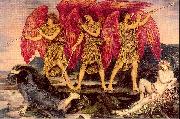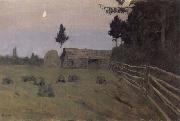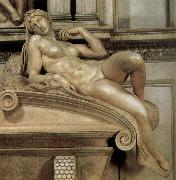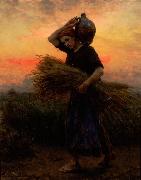Wholesale Oil Painting Reproductions No Minimum and Door to Door! |
|||||||||||
|
|
|||||||||||

|
|||||||||||
|
|
|
||||||||
All Morgan, Evelyn De Oil Paintings |
||||||||
|
|
||||||||
|
|
||||||||
|
Artist Introduction: English, 1855-1919
Painter, wife of William De Morgan. She was a pupil of her uncle, the painter Roddam Spencer Stanhope. In 1873-5 she attended the Slade School of Art, London. While there, she was awarded a Slade scholarship entitling her to financial assistance for three years. The scholarship required that she draw in charcoal from the nude, but she eventually declined it because she did not wish to continue working in this technique, although she excelled in it. She was influenced by the work of the Pre-Raphaelite artists and became a follower of Burne-Jones. In 1877 she first exhibited at the Grosvenor Gallery, London, and continued to show there thereafter. From 1875 she spent several winters in Florence working and studying; some of her work is reminiscent of Botticelli, possibly because of her visits to Florence. She often depicted women in unfamiliar ways though in a manner more in tune with a female perspective. |
||||||||
|
|
||||||||
|
Dawn Painting ID:: 19544 |
1886
Russell-Cotes Art Gallery and Museum, Bornemouth. |
|||||||
Height Width |
INS/CM Quality |
|||||||
|
X |
| |||||||
|
|
||||||||
All Isaac Levitan Oil Paintings |
||||||||
|
|
||||||||
|
|
||||||||
|
Artist Introduction: Russia.1844-1927
|
||||||||
|
|
||||||||
|
|
Dawn Painting ID:: 59598 |
Dawn, 1900
|
||||||
Height Width |
INS/CM Quality |
|||||||
|
X |
| |||||||
|
|
||||||||
All CERQUOZZI, Michelangelo Oil Paintings |
||||||||
|
|
||||||||
|
|
||||||||
|
Artist Introduction: Italian Baroque Era Painter, ca.1602-1660
Italian painter. He was a painter of bambocciate (low-life subjects), battles, small religious and mythological works and still-lifes. He was born of Roman parents, baptized in the parish of S Lorenzo in Lucina and spent his entire life in his native city. A member of the Accademia di S Luca since 1634, Cerquozzi attended meetings of the society as late as 1652. His friends included Domenico Viola, Pietro da Cortona and Giacinto Brandi. More significant were his associations with foreign residents in Rome. According to Baldinucci, Cerquozzi had special affection for the Spanish, owing to the patronage he received from the major-domo of the Spanish Embassy as a youth, and would often don Spanish attire as a sign of his sentiment. His Spanish connections may partly account for the many commissions he later received from patrons identified with Rome's pro-Spanish political faction (Haskell). Cerquozzi enjoyed equally good rapport with northern European residents of Rome. He is documented as having quartered with artists from beyond the Alps, including Paulus Bor and Cornelis Bloemaert, for the bulk of his career. |
||||||||
|
|
||||||||
|
|
Dawn Painting ID:: 62065 |
mk276 1520 marble sculpture years Medici Chapel in Florence |
||||||
Height Width |
INS/CM Quality |
|||||||
|
X |
| |||||||
|
|
||||||||
All Jules Breton Oil Paintings |
||||||||
|
|
||||||||
|
|
||||||||
|
Artist Introduction: 1827-1906
French Jules Breton Locations
French painter and writer. After the death of his mother he was brought up in the village of Courrires by his father, grandmother and uncle. The last instilled in him respect for tradition and a commitment to the philosophical ideas of the 18th century. Breton father, as supervisor of the lands of the Duc de Duras, encouraged him to develop a deep knowledge of and affection for his native region and its heritage, which remained central to his art. |
||||||||
|
|
||||||||
|
|
Dawn Painting ID:: 69642 |
oil on canvas painting by Jules Breton, 1896, Carnegie Museum of Art, Pittsburgh |
||||||
Height Width |
INS/CM Quality |
|||||||
|
X |
| |||||||
|
|
||||||||
All William-Adolphe Bouguereau Oil Paintings |
||||||||
|
|
||||||||
|
|
||||||||
|
Artist Introduction: (November 30, 1825 - August 19, 1905) was a French academic painter. William Bouguereau was a traditionalist whose realistic genre paintings and mythological themes were modern interpretations of Classical subjects with a heavy emphasis on the female human body.
William-Adolphe Bouguereau was born in La Rochelle, France on November 30, 1825, into a family of wine and olive oil merchants. He seemed destined to join the family business but for the intervention of his uncle Eugene, a Roman Catholic priest, who taught him classical and Biblical subjects, and arranged for Bouguereau to go to high school. Bouguereau showed artistic talent early on and his father was convinced by a client to send him to the École des Beaux-Arts in Bordeaux, where he won first prize in figure painting for a depiction of Saint Roch. To earn extra money, he designed labels for jams and preserves |
||||||||
|
|
||||||||
|
|
Dawn Painting ID:: 85406 |
1881(1881)
Medium Oil on canvas
Dimensions 81 5/8 x 42 1.4 inches
cyf |
||||||
Height Width |
INS/CM Quality |
|||||||
|
X |
| |||||||
|
|
||||||||
|
Prev Next
|
||||||||
|
|
||||||||
|
Related Paintings to William-Adolphe Bouguereau :. |
||||||||
|
|
||||||||
|
CONTACT US |





